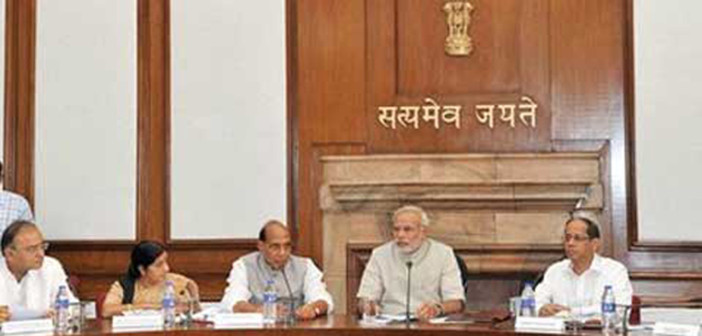The intense scrutiny to which the new government was subjected even as it completed just one month in office vindicates the movement towards collective awakening which is strengthening its hold over the country. Towards the end of June, the whole media could be seen producing innovative ‘report cards’ on the performance of the new government since it assumed office on 26th May. The post-Budget period has also seen fresh reviews on the government’s performance so far. Based on ideological or political motivations, most of these assessments highlighted the string of policy announcements and measures that the government has endorsed and the gaps it has left unfulfilled. That is why it is no wonder that most of the ‘expert’ commentators are disappointed with the policy ‘continuity’ with the previous government that this government apparently displays.
However, in order to assess the government’s performance, it is important to see how the detailed policy decisions that the government is taking contribute to national changes at a much broader level. The past two months have seen a number of initiatives by the new government in different sectors. While there can be no certainty regarding the actual realization of these initiatives, yet they mark a significant departure from the former UPA-II government.
For, it is the framework within which the government is functioning and the intentions it is expressing that make a difference, even though a detailed analysis of policy statements like the Union Budget 2014 reveals continuities with the ‘UPA budget’. It is worth noting that this framework of the government becomes important because though institutions largely function independently of the detailed interventions of the top national leadership, the government plays an important directing role in laying out the foundations for future changes. This government may display some continuities with the UPA government but it differs radically in the foundations it is laying down.
The new government has sent out strong signals indicating the foundations on which it will be based and has also backed them up with action where feasible. The previous government sought to consolidate the position of individuals and the party by promoting populism, corruption and identity politics, even though it was forced to take some tough decisions last year to tackle the growing economic crisis, such as the formation of Cabinet Committee on Economic Affairs, monetary policy reforms, regulatory consolidation and others. But these reforms were promoted as the Congress struggled to uphold its populist reputation. It was facing diminishing returns of its flagship welfare schemes to targeted sections of society implicating it adversely in their eyes.
In contrast, the new government has followed a completely different course without scrapping any of the welfare schemes, as many expected it to do. It has also fulfilled some, less glamorous, but more substantial policy initiatives in the areas of defence, finance, administration, economy and foreign policy: In economy and finance, while the government has expectedly charted a policy favorable to a greater role of the global and domestic capital necessary for the country’s short-term economic viability globally. It has also disproved the assumption about its blindly pro-capital agenda by proceeding cautiously on economic reforms in issues such as inflation and financial sector. It has not hesitated to implicate groups like Reliance in the power sector.
Similar vigour is visible in the field of administration too, where the new government has not hesitated to target the luxurious culture of bureaucrats through a series of austere directives. These were largely a part of the government’s ‘ten point agenda’ and small steps, but are significant as correctives of the deep-rooted, collective ill-will its targets have spawned. There are numerous other instances of domestic initiatives that the government has undertaken so far, but they are not grand or immediately obvious due to the complexity of negotiating interests involved.
A more explicit manifestation of the new government’s framework can be assessed through its international policy, where the government is relatively less constrained by competing interests. The aggressive ramping up of defence deals, the straightforward outreach towards the South and South-East Asian nations and the renewing of the role of BRICS as, not just a political, but also a feasible economic alternative to the hegemony of the West, have made it clear that this government intends to follow a long-term foreign policy plan, unlike the short-termism that characterized the previous government. Most significant in this respect is the vision to promote India’s political leadership in an increasingly resurgent Asia, with attempts towards developing a special relationship with countries like China and Japan outside of multilateral fora which are likely to further challenge the weakening American and European hegemony.
While India’s changed position in international politics clearly reflects the new government’s decisive future orientation, it should also provide guidance to draw inferences about the government’s future course of action in domestic policy as well. In fact, it should be assessed less on the basis of ‘reforms’ or ‘policy’, which are only meant to lay a stabilizing groundwork for the future, and more on the basis of deeper and larger movement that is increasingly shaping the very nature of government in general.
For, more than the differences between the parties in power, substantial difference is made by the fact that the very institution of government is itself changing as it is being simultaneously constrained and encouraged by a changed and resurgent national environment.

